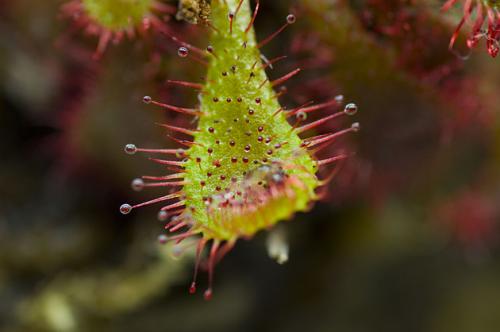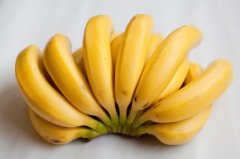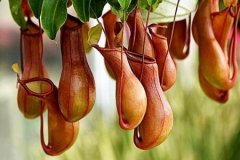What are the insectivorous plants? Is felt moss eating insects an insectivorous plant?
Insectivorous plants are a group of less well-known horticultural plants. They have insectivorous characteristics different from ordinary plants. Coupled with some misconceptions, do you know which insectivorous plants exist?
Nepenthes: A structure used by Nepenthes to catch insects. It is a specialized catching sac at the end of the leaf. The sac contains digestive juice. Once the insect falls through the smooth sac, it will drown and be digested. Nepenthes has a lid on the insect trap, which does not cover the insect trap down. Its main function is to block rainwater and prevent digestive juice from being diluted and losing its effect.
Venus flytrap: The leaves of Venus flytrap resemble catcher's gloves and grow on long, flat petioles. The edges of the leaves have long bristles that, when the two leaves close together, act like interlocking steel teeth on a mousetrap, forming a tight cage that insects cannot escape from. On the leaves, there are sensory bristles. When an insect touches the bristles, the Venus flytrap leaves close and glands on the leaves secrete acidic digestive juices to break down the insect's nutrients.
Drosera, sundew, tricularia and other indigenous insect-catching plants, although their size is relatively small, but also are experts in catching insects!

Drosera: Drosera distributed in the northern mountains, the whole plant about the size of fifty copper coins, stems are not obvious, leaves to extend all around, tiled ground, really like a small carpet spread on the ground!
Take a closer look, the carpet above the long dense hair, hair top there is a drop of round liquid, sunlight, sparkling, like dew. These glandular hairs are the best tools for catching insects! When insects are attracted to dew-like liquid and crawl up to it, they are stuck by the viscous liquid and become a snack of sundew.
Drosera: also uses glandular hairs on leaves to stick insects. However, the glandular hairs can catch smaller insects. Utricularia is a small aquatic plant. The plant usually grows in water. Only when it blooms, the flower axis extends on the water surface. Looking at their slender appearance, it is hard to imagine that they are also insectivorous plants. Utricularia leaves branch into filiform, and there are some vesicles, vesicles have inward opening flap, once the small animals in the water drill in, it is not easy to come out again, also become nutrients for Utricularia!
- Prev

What happens if you eat too many bananas? will you get fat? What's the harm of eating too many bananas?
Banana is a kind of cheap and healthy fruit, and its nutritional value is also very high, but it can't be eaten much. Why? Bananas are high in calories and sugar. Excessive intake can be harmful to health. It seems that people with cardiovascular disease and diabetes try not to.
- Next

Where does pitcher plant originate and how to reproduce? Can pitcher plants digest when eating insects?
The main producing area of pitcher plant is tropical Asia. Do you know anything about pitcher plants? Do you want to know about it? Let's take a look. How to reproduce pitcher plants? Pitcher plants are mainly propagated by "cutting". The cutting of pitcher plant is easy, and
Related
- A one-day flower show brings 130 million yuan in orders! Nanhai, this Phalaenopsis exhibition is amazing
- What do the flower language and meaning of Lutheran tree mean? Precautions for planting Lutheran tree
- Encounter Chaoshan Kongfu tea, not without this cup of Phoenix single clump
- The durian market in Vietnam and Thailand is flooded. The price of imported durian has plummeted by 30-40% in a month.
- Shanghai solved the problem of local vegetable supply by planting 80,000 mu of green leafy vegetables.
- Wageningen University has become the best agricultural university in the world for the seventh time in a row.
- The strongest export season of South African grapes is full of challenges, with exports to Russia falling sharply by 21%.
- Sri Lanka is on the verge of bankruptcy, "Tea for debt" Organic Agriculture Revolution aggravates the Food crisis?
- Turning waste into earthworm manure and worm manure into organic fertilizer-A new choice for auxiliary farming
- Organic rice growers shoulder the responsibility of nurturing agricultural talents! Yinchuan Sustainable Farm with Organic Life Camp

